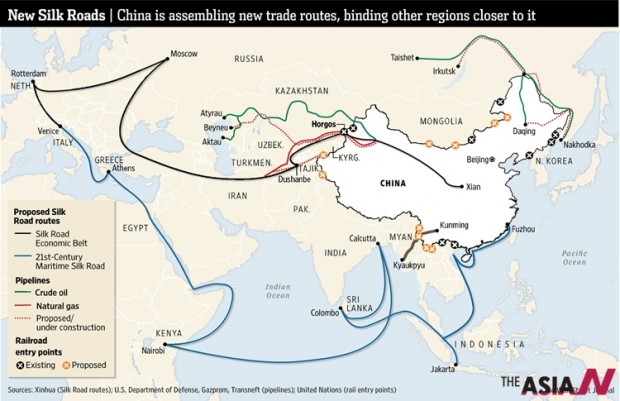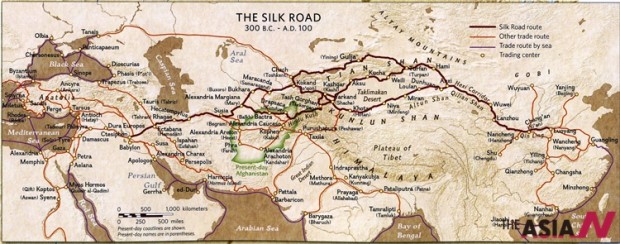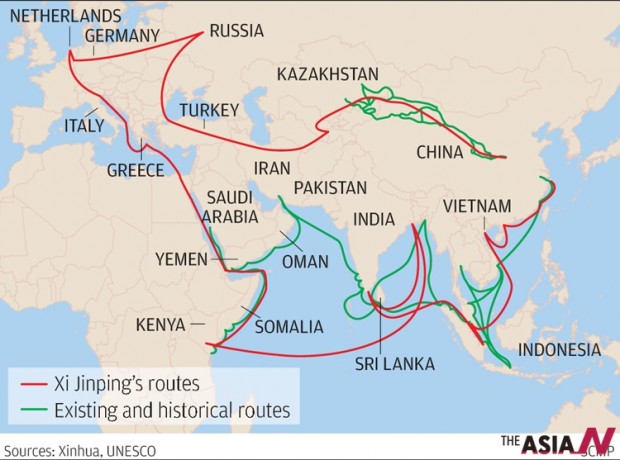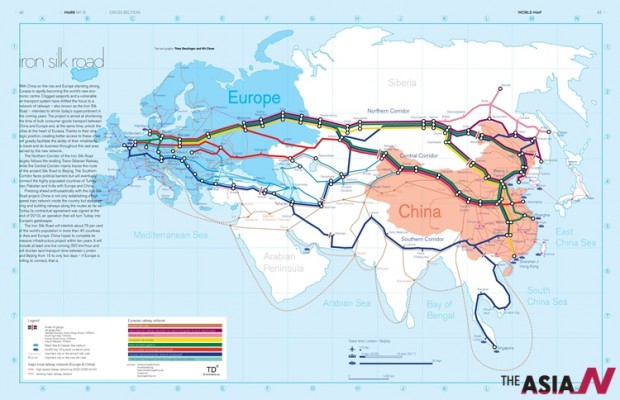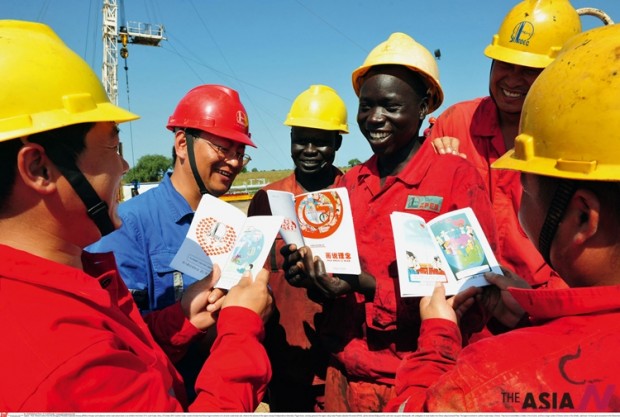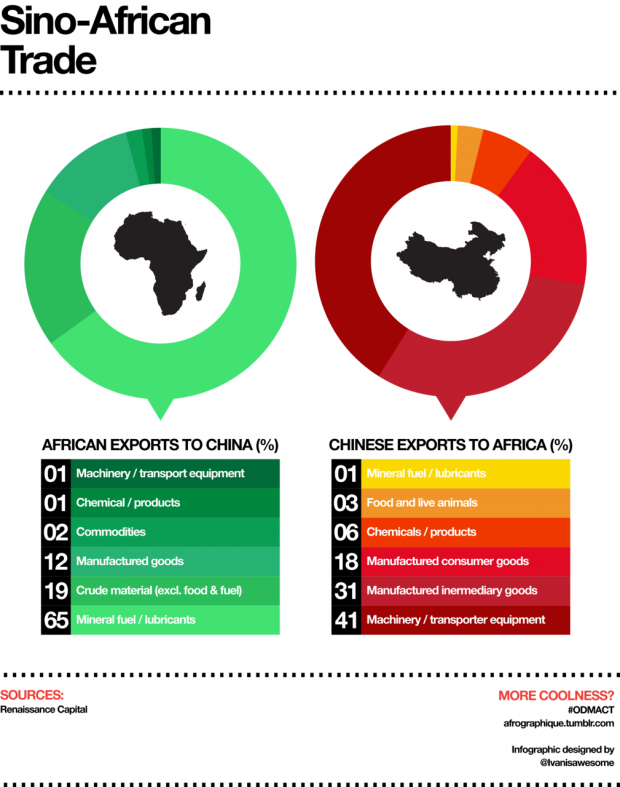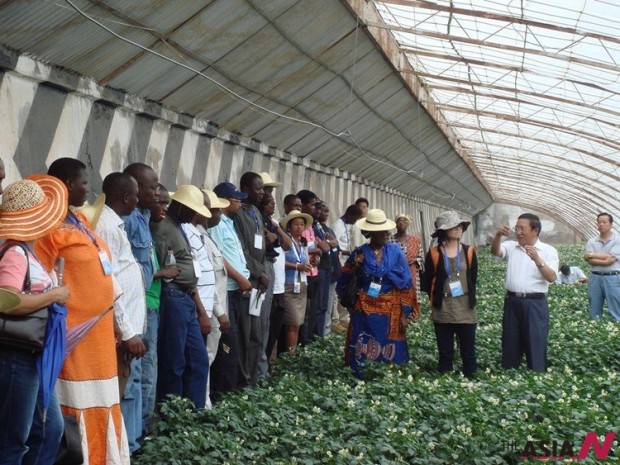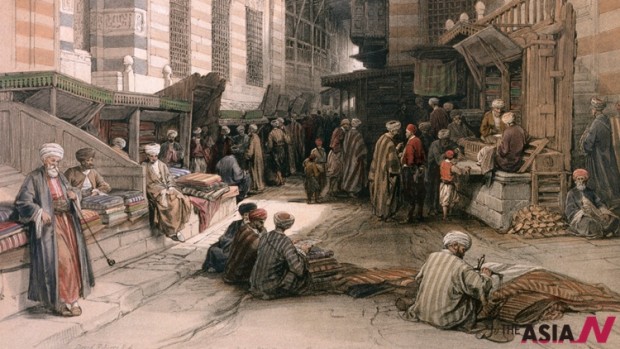The New Capital of the Silk Road
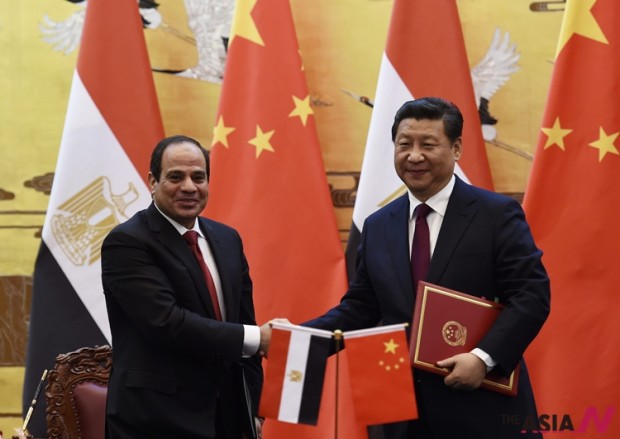
Egypt’s President Abdel Fattah al-Sisi (L) shakes hands with Chinese President Xi Jinping during a signing ceremony in the Great Hall of the People in Beijing.
Since coming to power on 14 March 2013, Chinese President Xi Jinping has worked to realise the “Chinese dream” and particularly the Chinese “economic belt” and new Silk Road. His initiatives have become compass points for China’s diplomatic, economic and cultural policies on the Asian, African and European continents.
The belt and the road, more properly the “Economic Belt for the Silk Road” and the “Maritime Silk Road in the 21st Century”, came together in autumn 2014 when Xi Jinping unveiled them during his visits to Kazakhstan and Indonesia in September and October.
His vision, which covers China, West Asia and Europe and the maritime route, which stretches from Southeast Asia through the Indian Ocean and Arabian Sea, seeks to revive the ancient Silk Road that brought progress to the cultures and civilisations along its course.
These societies exchanged commercial goods along the road, and inventors, philosophers and poets moved across borders together with merchants, craftsmen and artists.
When I was preparing my Silk Road Encyclopaedia, published by the Alexandria Library last year, I found more than 160 cities and geographical landmarks along the famous route whose civilisations flourished and acquired worldwide fame.
True, some of them have now vanished, but those that remain continue to thrive on their past glory and benefit from this in terms of commerce, tourism, culture and the arts. It is easy to imagine how many of today’s cities would benefit from being on the new Silk Road were the belt and the road to be revived according to the Chinese vision.
The idea is based on linking the regions of central, south and east Asia through a logistical and industrial chain that covers the Asian and European continents and passes through the Arabian Peninsula and East Africa, including Egypt, on its way to Europe.
Confronting the economic hazards that Asia and Europe have experienced in the past requires the development of new fields for economic growth and perhaps also some economic restructuring.
At all events, the initiative is based on economic cooperation and is supported by human and cultural interconnectivity. It espouses the principle of non-intervention in the domestic affairs of other countries, and it does not seek to secure a leadership role for China in regional affairs or to delineate spheres of influence in the regions it crosses.
The initiative is not proposing an entity but rather a series of bilateral and multilateral mechanisms between China and the nations located along the land and maritime Silk Roads. In substance, the belt and the road rest on five cardinal principles: policy coherence, road linkage, activity interconnectivity, currency circulation and mutual understanding.
CHINA AWAKES: Taking Africa first, since Xi Jinping came to power China has made more than $20 billion in loans to this continent, which has welcomed a new economic power that poses as an alternative to western influence.
In Oyo, where the Congolese government plans to set up one of four special economic zones, the Chinese president has pledged to build a river port costing $63 million. Brazzaville has also obtained Chinese pledges to build a 19-megawatt hydraulic power station in the north of the country and a port for treating raw minerals in Pointe-Noire, Congo’s economic capital.
While in Tanzania during his African tour, the Chinese president spoke of the sincere friendship that bound his country to Africa and pledged to strengthen it. He called on all other countries of the world to respect the independence and dignity of Africa, which is experiencing vast economic growth.
Relations between China and Africa “will intensify and never weaken” during his presidency, he said, adding that the volume of trade between China and Africa had already reached $200 billion before he became president.
When I was in the still-united Sudan ten years ago, the sight of Chinese workers working on major construction projects, while new to me, had become familiar to the Sudanese.
Perhaps the most important of these projects was the Meroe Dam, but the Chinese were also active in road construction and antiquities projects. Today, this Chinese involvement has been replicated in many other African countries.
It is clear to all around the world that the Chinese giant has awoken and that the Chinese have fathomed the significance of Africa’s freeing itself from the shackles of European colonialism half a century ago. China is now reaching out to shake the hand of a partner and expressing its readiness to help build it.
President Xi Jinping chose as his first destinations in Africa the Republic of Congo (Brazzaville), Tanzania and South Africa. His focus was economic, and he said, “The future development of China will present an unparalleled opportunity for Africa. Development in Africa will mean development for our country.”
The presidential visit was followed by others by senior Chinese officials to these and other countries, from Ethiopia to Nigeria and Kenya to Angola. China has become the main construction partner in Ethiopia, and is paving the way to stronger relations through a visa-exemption agreement for diplomats, loans, road and railway building, development of mobile telephone services, creation of industrial zones, and promotion of cultural, economic and technical cooperation. China is investing over a billion dollars a year in Ethiopia.
China was a staunch supporter of the African liberation movements in the past, and with the African economic boom today it hopes to reap the fruit of that relationship. On top of this the Chinese president’s initiative for the belt and the road holds out the promise for open and comprehensive development. He likened this to a choir in which all the participating countries along the roads will sing in harmony.
The Chinese initiative comes amidst other Asian economic initiatives, such as the Eurasian Economic Union (EEC) which has just been joined by Kyrgyzstan. The EEC, whose other members include Russia, Kazakhstan, Belarus and Armenia, also seeks to increase economic cooperation and promote the flow of goods, services, capital and labour, as well as to coordinate policies in the energy, industrial, agricultural and transportation sectors.
It also comes at a time when the European market is struggling to emerge from the stagnation and slowdown that is hampering the growth of budgets and is making it impossible to remedy the fallout of faulty policies.
It was therefore not surprising to hear the positive reactions towards the Chinese belt and road initiative from European Commission President Jean-Claude Juncker, who said that it will be beneficial to European countries that are thirsting for investment.
EGYPT ON THE ROAD: However, the crucial question for Egypt is where it will be located on this new Silk Road. On 23 December last year, President Xi Jinping received Egyptian President Abdel-Fattah Al-Sisi in the Great Hall of the People in Beijing. The two heads of state inaugurated, in the framework of mutual understanding, trust and support, a platform for raising Chinese-Egyptian relations to the level of a comprehensive strategic partnership.
As Al-Sisi noted at the time, Egypt was the first Arab and African nation to establish diplomatic relations with the new China. However, the past four years, with all the changes afoot in Cairo, have tested that historic relationship.
The Chinese president has postponed his visit to Cairo, despite Al-Sisi’s repeated invitations, though this has not prevented the wheels of joint economic action from picking up pace. Chinese Minister of Commerce Gao Hucheng served as the special envoy of the Chinese president at the head of a 15-member delegation that participated in the Egypt Economic Development Conference earlier this year.
More than 40 Chinese companies took part in the conference, as well as representatives of the Chinese Export-Import Bank, Sino-African Development Fund, Chinese Investment Organisation and Chinese Development Bank.
But the situation is still short of the hopes and expectations that have been invested in it. According to the Egyptian-Chinese Studies and Research Centre at Helwan University, outside Cairo, there are now 50 joint investment projects engaging both Egyptian and Chinese capital and costing a total of around $50 million.
These are involved in clothing, textiles, shoes, bags, plastic products and carpets. Egypt is China’s third-largest trading partner in Africa, and the Chinese factories and firms already operating in Egypt offer great hopes for attracting more Chinese industries to the country.
Chinese investments in Egypt totalled $600 million at the end of 2013, and in the same year there was a total of $8.3 billion in Chinese exports to Egypt and $1.8 billion in Egyptian exports to China. The volume of Chinese investments in the Special Economic Zone in Suez came to $400 million and yielded $250 million a year through 31 Chinese companies that employ around 2,000 Egyptians.
According to Yasser Gadallah, director of the Chinese Centre at the University of Helwan, the deficit in the balance of trade between Egypt and China rose by $6.5 billion, or 16.2 per cent, in the period from 1995 to 2012.
He expects it will increase by another billion dollars to 20.2 per cent by 2019 unless we address problems facing Egyptian exports. Further studies should be conducted on the Chinese market, Gadallah says, and the quality of Egyptian products should be improved and marketed at more competitive prices.
These figures on the balance of trade are still modest for two countries that are the largest in Asia and the largest in the Arab region, however. Perhaps the reason lies in the lack of sufficient preparations for the economic future.
I believe a golden opportunity awaits Egypt with the development of the Chinese belt and new Silk Road, especially as the new maritime Silk Road puts Egypt at its very centre because of the Suez Canal and the mega-project to construct a twin canal running parallel to it.
Perhaps the unit created by the cabinet just before Al-Sisi’s visit to China, charged with promoting Chinese investments in Egypt, will give a serious boost to the development of the Suez Canal axis and energy projects and the economic zone northwest of the Gulf of Suez.
But we should not be content with Egypt serving only as a route for trade between Asia, Africa and Europe. We need to build free-trade zones in Upper Egypt on the Red Sea coast and in the north in Suez. China has a long experience in the development of small- and medium-sized industries, and this experience is also appropriate to Egypt as these do not require advanced technology.
By spreading this culture of small industry development in the Egyptian market, possibly focusing on crafts relating to Egypt’s history and civilisation, it will be possible to generate an important source of income for thousands of poorer families.
China has pledged to offer thousands of study grants a year to countries located along the economic belt and new Silk Road. Egypt should take advantage of this offer, which will help develop the expertise we need in various fields. It should be borne in mind that China now rivals the West in technological progress, as well as in medicine and other scientific fields.
Finally, we need to situate Egypt better on the map of cultural, artistic and sporting events. For example, Silk Road Festivals are now being held in many countries along the Silk Road; among them, China and Russia. The time has come for Egypt to produce its own Silk Road Festival that would showcase it as a pioneering country on the new Silk Road. After all, for thousands of years both the ancient and modern Egyptians have left their imprint on countries far beyond their borders.
Located as it is at the meeting point of three continents, Egypt is poised to become the capital of the new Silk Road. It has the prestige of its ancient history and the hopes of the present on its side. The splendour of the future rests in the hands of its people.




















